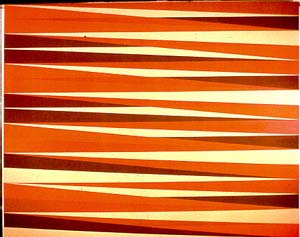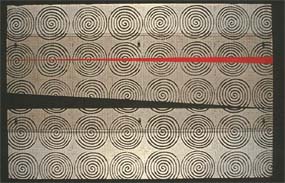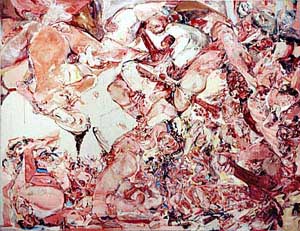L'edicola digitale delle riviste italiane di arte e cultura contemporanea
Flash Art Int. (1999 - 2001) Anno 33 Numero 215 November-December 2000
Cecily Brown and Odili Donald Odita
Goya, Vogue, and the Politics of Abstraction

Franz Ackermann
Wolf-Günter Thiel and Milena Nikolova
n. 216 Jan-Feb 2001
Shangai Biennale
Satoru Nagoya
n. 216 January-February 2001
Aperto Albania
Edi Muka
n. 216 January-February 2001
Cai Guo-Qiang
Evelyne Jouanno
n. 215 November-December 2000
Aperto New York
Grady T. Turner
n. 213 summer 2000
Sexually Explicit Art
Grady T. Turner
n. 212 May-June 2000



Odili Donald Odita: Are you trying to do something with the figure that goes beyond what other people have done before?
Cecily Brown: I'm trying to push it and take it forward for myself. In a way using the figure is the most arrogant thing, to take this historical thing and think you can do something new. I don't want to illustrate a sexual act. I want you to get the feeling of the tension of skin being pulled apart, a mouth being forced open.
ODO: What I was thinking before is that your work is about "becoming." A Francis Bacon, for example, contains a certain kind of exactness that is interesting. In your work there's a form that is becoming.
CB: You're describing what Bacon does, the trapping of a fleeting moment, the essence. The thing about the painting being in a moment of change is exactly what I'm talking about. Like
when figuration was becoming abstraction, that's the most interesting thing to me about people like Newman and Rothko. Their early watercolors and drawings are so rooted in the
body, but it's totally about metamorphosis and they're just trying to figure out this in between space.
ODO: Do you feel that American artists today suffer, not from any lack of being technically proficient, but from a lack of significant content as compared to let's say, Germany?
CB: Right now, I don't know if I can talk about contemporary German painting. I don't know the content of American painting. I can tell you about the content of the artists I'm interested in. John Currin is a good painter, and a very interesting artist. But, in a way, his content is the weakest part of his work. (To be continued in the magazine.)
Odili Donald Odita is an artist, writer, curator, and an Associate Professor of Painting at the Florida State University, Tallahassee.
Cecily Brown was born in London in 1969. She lives and works in New York. Selected solo shows: 2000: Gagosian, New York; 1999: Victoria Miro, London; 1998: Deitch Projects, New York; 1995: Eagle Gallery, London. Selected group shows: 2000: "Emotional Rescue," Center on Contemporary Art, Seattle; "The Figure; Another Side of Modernism," Newhouse Center for
Contemporary Art at Shug Cultural Center, New York; "Drawings 2000," Barbara Gladstone, New York; "RAW," Victoria Miro, London; "Greater New York; New Art in New York Now," P.S.1/MoMA, New York; "Psycho," Anne Faggionato, London; 1999: "Objects in the Rear View Mirror May Appear Closer Than They Are," Max Hetzler, Berlin; "Facts and Fictions," In Arco, Torino; "At Century's End," MoCA, Lake Worth (Florida); "Pleasure Dome," Jessica Fredericks, New York; 1998: "Four Letter Heaven," David Zwirner, New York; "Vertical Painting," P.S.1, New York.


